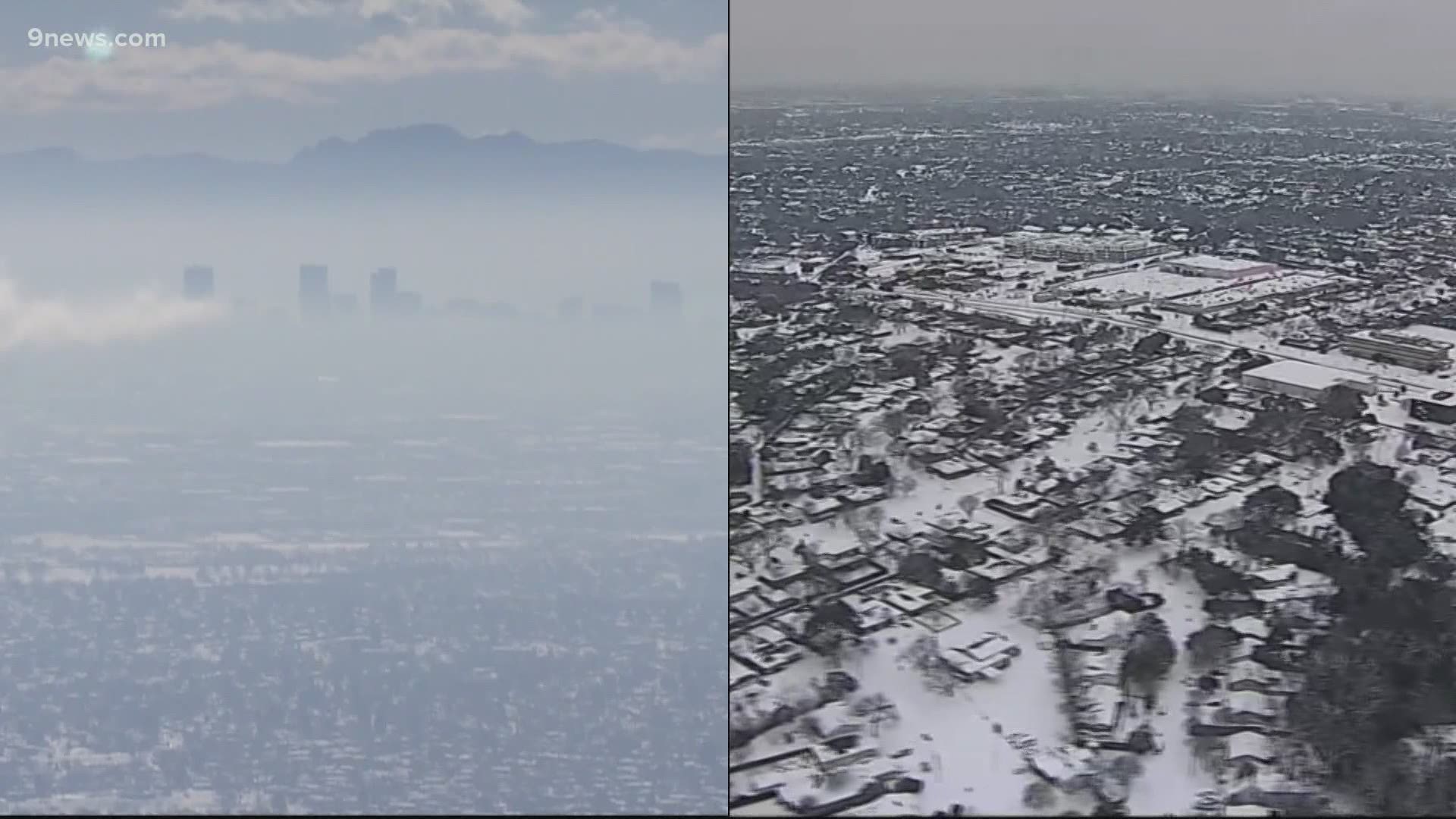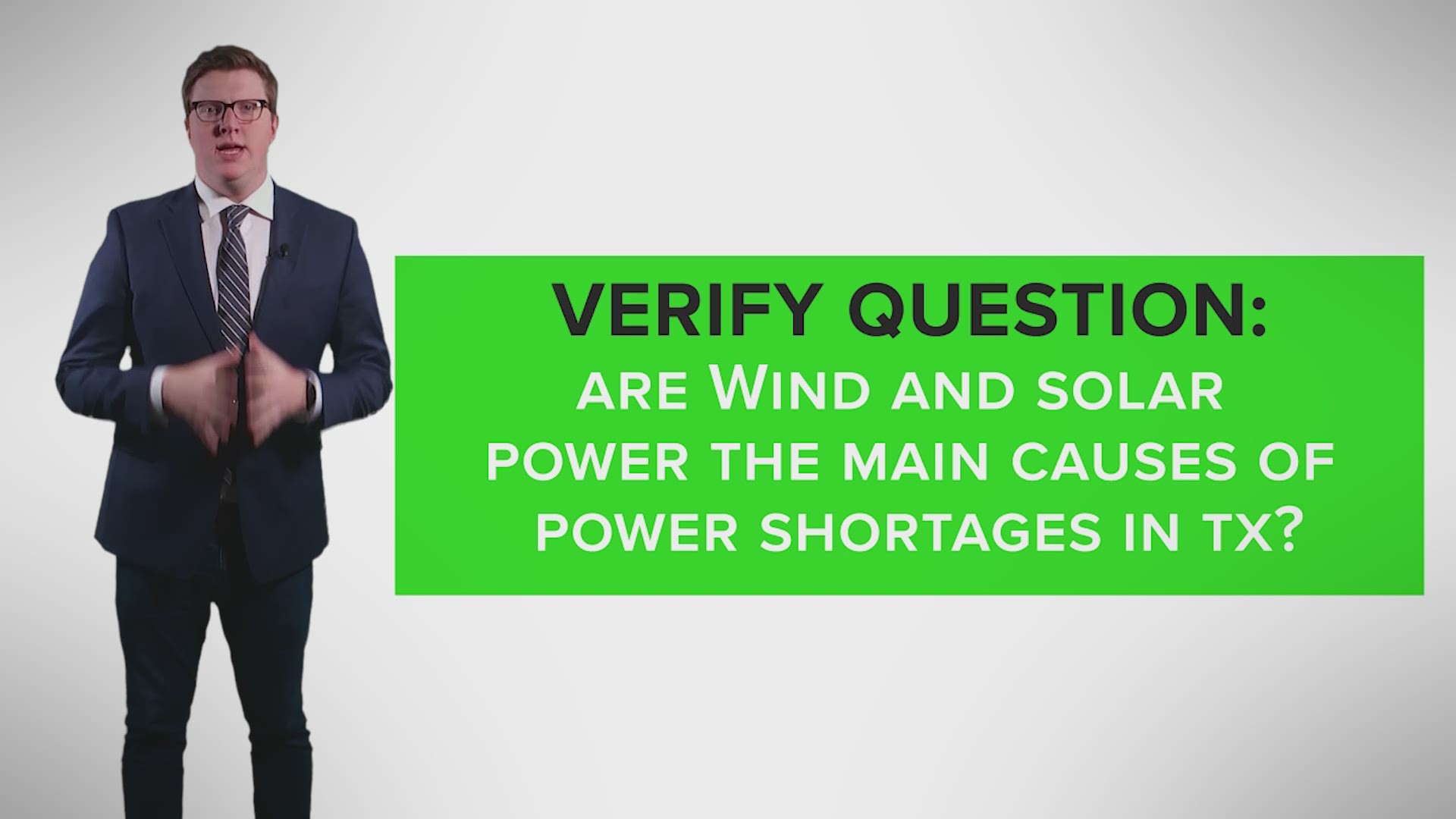DENVER — Power is slowly being restored across the state of Texas, though FEMA is reporting 600,000 people are still without electricity.
Just a few days ago, temperatures in many parts of Colorado dipped well below zero, yet our utilities didn't suffer anywhere near the impact seen in Texas.
We asked the executive director of the Colorado Energy Office, Will Toor, why that is.
(Editor's note: Responses may have been lightly edited for context and clarity.)
First, can you help us understand the power grid in Texas?
Toor: Texas has a very unique situation in that they have a deregulated electric supply and they have a very isolated grid with very little transmission capacity linking Texas to other areas. They have a grid regulator, ERCOT, the Electric Reliability Council of Texas that's the overall regulator for trying to assure they have reliability on the grid, but they have much less regulation of the individual generators than you see in other states.
They also, of course, are a very warm southern state whose primary focus on reliability has been for hot summer days and are clearly not as well prepared for cold weather as you would see in more northerly parts of the country.
How is Colorado’s setup different?
Toor: One of the big, big differences is that we do have a highly regulated market. So, a majority of customers in Colorado are served by investor-owned utilities that are directly regulated by the Public Utilities Commission. Other portions of Colorado are served either by municipal utilities where they are regulated basically by the city councils of those cities, or the rural electric cooperatives who were served by Tri-State Generation and Transmission and Tri-State’s resource planning actually is also governed by the Public Utilities Commission. So, I'd say we have a lot of oversight of grid planning in this state. Now, Colorado is certainly not as much of an island on the grid as Texas is.
There are links both to the east and to the west. We're not a state that typically has a lot of power traveling across state lines. The only utility that really imports a significant amount of power into the state is Tri-State who has generation resources in Wyoming. We also see an increasing move in Colorado by your utilities to join in larger regional electric markets. Virtually all of the utilities are moving into what are known as energy and balance markets, some of them looking to the Southwest Power Pool who are more to the east of us, and some towards what's known as Cal-ISO, the California Integrated System Operator, to the west of us. So, I think we're seeing increasing interest from utilities in actually having a larger presence in these larger regional markets.
What’s the benefit of our systems being different?
Toor: I think there's a couple of benefits. In the near term, simply being part of a larger market offers some opportunities for cost savings. In the longer term, being part of a larger market with sort of a larger geographical footprint really offers a lot of benefits as we move towards more and more renewables on the grid if you're able to be balancing with wind and solar, not only in Colorado but in many different geographical locations that have some real benefits in terms of providing you reliability with very high levels of renewables on the grid.
Could something like what happened in Texas happen in Colorado?
Toor: I think that we've got a very robust system for ensuring reliability in Colorado. Certainly, from the policy administration perspective, as we work with our electric utilities on greening the grid, the direction that we take on it is that we should be maximizing the reduction in pollution that is possible while maintaining affordable and reliable power. What we've seen is that we can achieve really enormous reductions in pollution while still maintaining affordable power and maintaining reliability. That’s the philosophy that we bring to the process and we'll bring to the process going forward.
Are wind turbines the cause of what happened in Texas?
Toor: There are what I would describe as some rather silly claims that have tried to link the blackouts in Texas to wind turbines. The basic fact is that at this time of year, the Texas grid relies on a relatively small percentage of wind in the winter. It certainly is true that there were some wind turbines there that went off offline. Just as the rest of their system is not well prepared for cold weather, the wind turbines in Texas aren't either, but the vast majority of the impact actually came from natural gas power plants going offline.
What they saw was that there were just multiple components involving things like frozen pipes pressure gauges that don't work in cold temperatures, not only on their natural gas system but actually in their nuclear power system. They had a pressure gauge, a freezing problem that caused one of their nuclear power plants to go offline. Basically, there was no source of generation in Texas that didn't have problems.
Wind, coal, gas, and nuclear all suffered because none of them were prepared for those types of cold weather. There are technology packages that you can get that have things that warm valves and you can have things that help to warm and deice wind turbines. If you look at power plants in Colorado during cold weather, our power plants, whether they're coal, gas, etc., all function because we're prepared for that weather because we're in Colorado, not Texas.
What damage does misinformation regarding renewable energy sources cause?
Toor: I think that the move towards renewables is pretty much unstoppable at this point because it's now driven as much by lower costs as it is by environmental concerns. We are now in a world where it is cheaper to build new wind turbines and new solar plants than it is simply to operate most of the existing coal generators in the country. I think the momentum is just going to build.
That’s why in the last two years we've seen utilities representing 99% of fossil generation in the state announcing plans to reduce their pollution by at least 80% by 2030 by retiring older and uneconomic coal power plants and replacing them primarily with wind, solar, and battery storage. Natural gas certainly plays an important role also.
What we're seeing is that utilities typically are, at least for now, using natural gas combustion turbines to back up the renewables and ensure that they're able to maintain reliability while still having the vast majority of power over time coming from wind and solar. I think that we've got wind and solar resource in Colorado that is able to provide us with very high levels of renewables while still maintaining reliability.
What’s your reaction to the situation in Texas this week from a personal and professional standpoint?
Toor: I certainly feel for the people of Texas. Clearly, a lot of people are suffering right now. I would certainly hope that going forward; there will be a larger focus on ensuring grid reliability in really extreme weather in Texas, as well as around the country. I do think that one of the things that we all need to be prepared for is that as we sort of experience global climate change, I think we are going to see more and more chaotic weather patterns and sort of unexpected impacts. Collectively, it's not just Texas; I think all of us need to be preparing our important infrastructure, including the electric grid, for that future of a more unstable climate at the same time that we try to reduce greenhouse gas pollution and limit the level of climate chaos that we see.
One of the other things that I think is different between Colorado and Texas, and that has some implications for what we should be doing going forward, is actually around our buildings and our building codes. One of the big reasons why Texas was so much more impacted by the cold spell is not only that their grid isn't prepared for it, but buildings aren't insulated the way they are here. So, the energy demand for heating with was far greater. As we move into again a world with more work climate extremes, it really does suggest that moving towards much more advanced building codes everywhere, including in Colorado, would have great value. We can build buildings that need virtually no heating, even in weather like the weather we experienced last week, and we should be moving in that direction.
SUGGESTED VIDEOS: Local stories from 9NEWS


